1st September 2015: Pain day
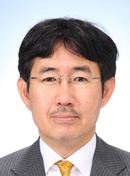
Keynote lecture-1
Molecular mechanisms of nociception in the peripheral nerve endings (9:00 – 10:00; Room A)
Dr. Makoto Tominaga
Professor, Division of Cell Signaling, Okazaki Institute for Integrative Bioscience, National Institutes of Natural Sciences, Japan.
Makoto Tominaga, MD, PhD, is a professor of Devision of Cell Signaling, Okazaki Institute for Integrative Bioscience (National Institute for Physiological Sciences) in Okazaki He graduated from Ehime University School of Medicine and got his MD. He completed his PhD in Kyoto University School of Medicine. He was working at National Institute for Physiological Sciences from 1993 and moved to UCSF (USA) in 1996 where he was involved in the cloning and functional characterization of capsaicin receptor TRPV1 and TRPV2. He has been continuously working on molecular mechanisms of thermosensation and nociception by focusing on thermosensitive TRP channels. He became a professor of Department of Physiology in Mie University School of Medicine in 1999, and move to Okazaki in 2004
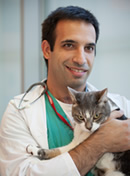
Lecture-1
Peripheral nerve blocks, the basics: anatomy and indications (10:20 – 11:20; Room A)
Dr. Manuel Martin-Flores
Assistant Professor, Section of Anesthesiology, Department of Clinical Sciences, College of Veterinary Medicine, Cornell University, U.S.A.
Dr. Manuel Martin-Flores, MV, DACVAA, is an Assistant Professor in the Section of Anesthesia, Department of Clinical Sciences, of the College of Veterinary Medicine at Cornell University. He graduated from the Catholic University of his native Cordoba, Argentina, and completed a residency in anesthesiology at Cornell University. He has been working exclusively in veterinary anesthesiology for the past decade. His research interests include neuromuscular function and monitoring of neuromuscular blockade, airway management and anesthesia-associated blindness in cats.
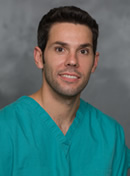
Lecture-2
Ultrasound-Guided Regional Anesthesia Techniques (11:20 – 12:20; Room A)
Dr. Fernando Garcia-Pereira,
Assistant Professor, Anesthesia and Pain Management, Large Animal Clinical Sciences, College of Veterinary Medicine, University of Florida, U.S.A.
Fernando Garcia-Pereira, DVM, Ms, DACVAA, is an assistant professor of the Department of Large Animal Clinical Sciences at the University of Florida. He graduated in veterinary medicine from the State University of Sao Paulo, Brazil. He completed his veterinary anesthesia residency and Master of Sciences in Veterinary Clinical Sciences at the College of Veterinary Medicine of the Washington State University. He spends his time between clinical work in the Veterinary Teaching Hospital of the University of Florida and research on the laboratory. His research interests are ultrasound-guided regional anesthesia, local anesthetic action, minimally invasive techniques and neuro and cardiovascular physiology.
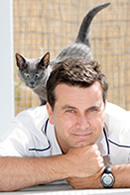
Lecture-3
Towards a better recognition of pain - differentiating emotional and sensory signs (13:50 – 14:50; Room A)
Dr. Daniel Mills
Professor of Veterinary Behavioural Medicine, School of Life Sciences, University of Lincoln, United Kingdom.
Professor Daniel Mills is a RCVS, European and ASAB recognised specialist in clinical animal behaviour, who has been pioneering new insights into clinical animal behaviour at Lincoln for over 20 years. He has a strong research interest in the comparative psychology underpinning behaviour and behavioural interventions, with a particular interest in what makes an individual different and how this arises from their interaction with the environment. To this end, he has been exploring how we can more reliably assess the emotional state of an animal in real-world settings. In this context he is currently leading on a large international multidisciplinary study examining the detection of pain in cats using ethological, clinical and machine learning methods Daniel still consults at the specialist behaviour referral clinic and teaches on both undergraduate programmes and the MSc in clinical animal behaviour offered at the University of Lincoln.
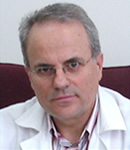
Lecture-4
Veterinary Anaesthesia and Analgesia: History and Future (14:50 – 15:50; Room A)
Dr. Dimitris Raptopoulos,
Professor Emeritus, Aristotle University of Thessaloniki, Greece, President, Council of the World Congress of Veterinary Anaesthesiology, CEO, European Board Veterinary Specialisation
Dimitris Raptopoulos, DVM, PhD, DVA, Hon Dipl ECVAA, is Emeritus Professor of the Aristotle University of Thessaloniki, Greece. He graduated from the Faculty of Veterinary Medicine of that University (FVMT), and from 1972 until the end of 2011 he was active in teaching, research, and clinical practice. He completed his Doctoral Thesis at the FVMT, and a two-year training in anaesthesiology at the School of Veterinary Studies in Bristol, UK, after which, in 1978, he obtained the Diploma in Veterinary Anaesthesia (DVA) of the Royal College of Veterinary Surgeons (RCVS). He also spent another 18 months in Bristol and 6 months in Gainesville, Florida, USA, as Research Fellow and Visiting Assistant Professor, respectively. From 2003 to 2007 he was Dean, and for a number of years Head of the Clinic of Companion Animals, and Head of the Department of Clinical Sciences of the FVMT. His research focused primarily on gastro-oesophageal reflux during anaesthesia, and preoperative fasting in dogs.
In 1995 he was appointed Invited Specialist and Founding Diplomate of the European College of Veterinary Anaesthesia and Analgesia (ECVAA), in the running of which he was actively involved for several years as Secretary, President, Past-President and Chairman of the Credentials & Education Committee. In March 2014 he was granted Honorary Membership of the College. He also served as President of the Association of Veterinary Anaesthetists (AVA), while since 2006 he is President of the Council of the World Congress of Veterinary Anaesthesiology. Since January 2013 he is Chief Executive Officer of the European Board of Veterinary Specialisation.
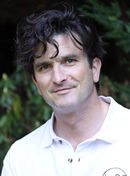
Dr. Peter W Kronen,
Senior Vice-President AVA, Member, Global Pain Council, WSAVA, Head, Experimental Anaesthesia and Analgesia, CABMM, Director and Founder, Veterinary Anaesthesia School for Technicians (VASTA), CEO -Veterinary Anaesthesia Services-International, Switzerland.
Dr Kronen graduated from the University of Munich (Germany) after studies in Pisa (Italy) and Munich. Thereafter he completed a Doctorial degree at the University of Pisa while working in a busy small animal referral center in tuskany where he developed his love for Anaesthesia, Analgesia and Intensive Care. He went on to train at the Brigham and Women’s Research Center in Boston (MA,USA) and completed his residency at Cornell University (Ithaca, NY, USA) where he stayed on as a junior faculty member. From there he conducted research and teaching projects in Viet Nam and on Guam Island.
He moved further west to become a lecturer in Anesthesia and Intensive Care at the University of California (Davis, CA, USA). Coming back to Europe he worked for the University of Berne (Switzerland)and completed a Swiss Thesis as well as his European Specialty Boards. In 2006, together with Urs Schatzmann, he founded the Veterinary Anaesthesia Services - International as the first internationally available Anaesthesia and Analgesia Specialty Service outside the USA. Numerous research, teaching and clinical collaborations have arose since then, but he also works for the University of Zürich and is Group leader for Experimental Anaesthesia and Analgesia in the CABMM (Center for Applied Biotechnology and Molecular Medicine), a joint Competence Center of the ETH and the University of Zürich.
In 2008, he founded VASTA, the Veterinary Anaesthesia School for Technicians, the first and only international school that provides a degree in Anaesthesia for technicians and nurses at an intermediate level.

Lecture-5
Regulation mechanisms of TRPV1 and TRPA1 (10:20 - 11:20; Room D)
Dr. Makoto Tominaga
Professor, Division of Cell Signaling, Okazaki Institute for Integrative Bioscience, National Institutes of Natural Sciences, Japan.
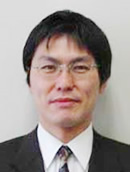
Lecture-6
Neural mechanisms for pain-induced negative emotion (11:20 - 12:20; Room D)
Dr. Masabumi Minami
Professor, Department of Pharmacology, Graduate School of Pharmaceutical Sciences, Hokkaido University, Japan.
Masabumi Minami, PhD, is a professor of the Department of Pharmacology at Hokkaido University, Graduate School of Pharmaceutical Sciences. He graduated from Kyoto University, Graduate School of Pharmaceutical Sciences and got his PhD degree. His research interest is Neural mechanisms for negative emotion, especially pain-induced negative emotion.
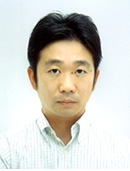
Lecture-7
Descending pain modulatory system and its activation by systemic alpha 2 agonist (13:50 - 14:50; Room D)
Dr. Hidemasa Furue,
Assosiate Professor, Department of Information Physiology, National Institute for Physiological Sciences, Japan.
Hidemasa Furue, PhD, is an associate professor of Department of Information Physiology at National Institute for Physiological Sciences in Japan. He graduated from Kyushu Institute Technology, and completed his PhD in the Graduate School of Computer Science and Systems Engineering at Kyushu Institute Technology. He has done basic pain research using a newly-developed in vivo neurophysiological recording technique since 1998, in Department of Physiology at Saga Medical School as a research associate for 3 years and in Graduate School of Medical Sciences at Kyushu University for 7 years as an assistant professor. Then He moved the current national institute in 2009 and started to study endogenous analgesic mechanism and autonomic control of visceral organs using optogenetic approaches.
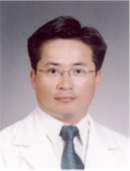
Panel discussion-1
Pain management education in Asian countries (16:10 – 18:10; Room D)
Panelists;
Dr. Inhyung Lee
Associate professor, Department of Veterinary Clinical Sciences, College of Veterinary Medicine, Seoul National University, Korea.
Inhyung Lee, DVM, Ms, PhD, is an associate professor of the Department of Veterinary Clinical Sciences, College of Veterinary Medicine, Seoul National University. He graduated Seoul National University and got his DVM. He completed his PhD (Dorsolumbar epidural anesthesia of cattle) in Obihiro University of Agriculture and Veterinary Medicine, one of the United Graduate School of Veterinary Sciences at Gifu University. He had a chance to do research for pain mechanism in the spinal cord at the University of Texas Medical Branch. He has been working at the anesthesiology section in the Veterinary Medical Teaching Hospital of Seoul National University since 2007 and spends long time in operating room, ICU, and ward for perioperative patient anesthesia and pain management. Recently, he started construction of Farm Animal Clinical Training and Research Center as a director of large animal hospital. His research interest is epidural and spinal anesthesia from lab animals to hospital patients.
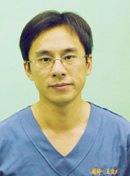
Dr. Hsien-Chi Wang
Assistant Professor, Department of Veterinary Medicine, College of Veterinary Medicine, National Chung-Hsing University, Taiwan.
Hsien-Chi Wang, DVM, PhD, is an associate professor of the Department of Anesthesiology at Chung Hsing University. He graduated from Chung Hsing Veterinary School and got his DVM. He also completed his PhD in Chung Hsing University. He has been working at the veterinary medical teaching hospital at Chung Hsing University since 2009 and spends long time in operating room, ICU, and ward for perioperative patient anesthesia and pain management.
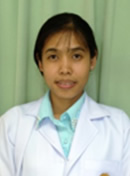
Dr. Sirirat Niyom
Lecturer, Department of Companion Animal Clinical Sciences, Faculty of Veterinary Medicine, Kasetsart University, Thailand.
Sirirat Niyom, DVM, PhD, is a lecturer of the Department of Companion Animal Clinical Sciences at Kasetsart University. She graduated from Kasetsart University in 2004 and got her DVM, then in 2013 she completed her PhD in Clinical Sciences at Colorado State University. She has been working at Kasetsart Veterinary teaching hospital since 2004 and had a break for her PhD study. After she completed her PhD, she gets back and work in operating room of the same hospital for perioperative patient anesthesia. Her research interest is pharmacokinetics and pharmacodynamics of anesthetics and perioperative pain management in small animals.
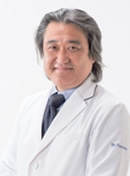
Dr. Kazuto Yamashita
Professor, Department of Small Animal Clinical Sciences, School of Veterinary Medicine, Rakuno Gakuen University, Japan.
Kazuto Yamashita, DVM, Ms, PhD, Charter Dipl. JCVS, is a professor of Rakuno Gakuen University, Japan. He graduated from Tottori University in 1987, completed his Ms in Tottori University and got his DVM in 1989. He finished the whole doctoral course in 1992 and was conferred on his PhD degree from Hokkaido University in 1994. He has been working at Rakuno Gakuen University from 1992 to the present. He spent 12 months at the Ohio State University as a Visiting Scholar in 1999-2000. He established and has operated the anesthesiology department in the Veterinary Teaching Hospital of Rakuno Gakuen University (RGU-VTH) since 2004. He has been active in teaching, research, and practice in veterinary anesthesia and analgesia. In addition, he acts as the treasurer of the Asian Society of Veterinary Surgery (AiSVS), the chairperson of the Japanese Society of Study for Animal Pain (JSSAP), and part of the World Small Animal Veterinary Association (WSAVA) Global Pain Council and the editorial board of the Journal Veterinary Medical Science. He is a chair of the organizing committee of this congress.
2nd September 2015: Pharmacology day
Keynote lecture-2
How to Use Pharmacokinetics and Pharmacodynamics in Clinical Practice (8:30 – 9:30;Room A)
Dr. Kenichi Masui
Associate professor, Department of Anesthesiology, National Defense Medical College, Japan
Kenichi Masui, M.D., Ph.D., is an associate professor of Department of Anesthesiology in National Defense Medical College (Saitama, Japan). He graduated from Yamanashi Medical University (Yamanashi, Japan). He has been working profoundly on TIIVA and its pharmacometrics. He is a Councilor of Japanese Society of Intravenous Anesthesia, a Councilor of Japanese Society of Technology in Anesthesia, and an Associate Editorial Board Member of British Journal of Anaesthesia.
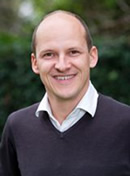
Lecture-8
Robenacoxib PK/PD in cat (9:50 – 10:50;Room A)
Dr. Jerome Graudel
Director, Product Development (Companion Animals)
Elanco Animal Health, Switzerland.
Jerome M. Giraudel graduated in 1996 from the National Veterinary School of Toulouse. He then completed an internship in small animal internal medicine and decided after one year of veterinary practice to reorient his career towards research in veterinary pharmacology. After two years of practical research experience, he was offered the opportunity to start a shared PhD between the Royal Veterinary College of London and the National Veterinary School of Toulouse on Pharmacokinetic/Pharmacodynamic integration and modelling of NSAIDs in the cat. He obtained his PhD in 2004 and from 2004 to 2014 worked in various capacities (Clinical Development Manager, DMPK expert, Global Head of DMPK & Safety…) with Novartis Animal Health. Jerome is a Diplomate of the European College of Veterinary Pharmacology and Toxicology and is currently Project Leader and Team Director in Companion Animal Product Development at Elanco.
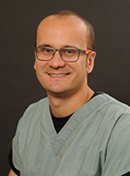
Lecture-9
Buprenorphine in cats: from the research lab to the clinical setting (10:50 – 11:50; Room A)
Dr. Paulo Steagall,
Assistant Professor, Department of Surgical Sciences, University of Montreal, Canada.
Dr. Steagall received his DVM and completed a Residency in Veterinary Anesthesiology at Sao Paulo State University (UNESP Botucatu), Brazil. He followed up his studies with a Ms and a PhD in Anesthesiology with emphasis in feline analgesia at the same institution. Currently, Dr. Steagall is an assistant professor of Veterinary Anesthesiology and Analgesia at the Faculty of Veterinary Medicine, University of Montreal, Canada and a board certified by the American College of Veterinary Anesthesia and Analgesia (ACVAA). He acts as the abstract coordinator for the ACVAA meeting. He is also part of the editorial board of the journal Veterinary Anaesthesia and Analgesia and Journal Feline Medicine and Surgery, and the World Small Animal Veterinary Association (WSAVA) Global Pain Council
Lecture-10
Total intravenous anaesthesia and alfaxalone (9:50 – 10:50; Room D)

Lecture-11
Application of alfaxalone in various species other than dogs and cats (10:50 – 11:50; Room D)
Dr. Kirby Pasloske,
Senior Research Consultant, Jurox Pty Ltd, Australia.
Kirby Pasloske, BSc (Hons), DVM, DVSc, DACVCP, MANZCVSc
Kirby received his first two university degrees at the University of Saskatchewan (BSc Biochemistry 1987 and Doctor of Veterinary Medicine 1991). From 1991 to 1994 he was in private veterinary practice in Vancouver. In 1994 Kirby went back to school at the Ontario Veterinary College, University of Guelph where he completed a Doctor of Veterinary Science in the discipline of Veterinary Clinical Pharmacology. From 1997 to 2000 Kirby served as Veterinary Researcher at Merck and Co. Ltd in New Jersey, USA where he worked in drug discovery and development. During this time Kirby also became a Diplomate of the American College of Clinical Pharmacology. In 2000 Kirby was recruited by Elanco Animal Health in Indiana, USA to the position of Group Leader, Pharmacology. In 2003 Kirby accepted the position of Research Program Manager with Jurox Animal Health located in the Hunter Valley of New South Wales, Australia. From 2008-2009 Kirby worked as Manager, Animal Health for the CRO Agrisearch in Orange, NSW, Australia. In 2009 Kirby accepted the Head of R&D position at Jurox. Kirby was also the GLP Test Facility Manager for the facility. Kirby resigned the Head of R&D position at Jurox in June 2013 and moved back to his native country Canada to be closer to family. He continues to work for Jurox as a Senior Research Consultant.
Over the last 18 years Kirby has accumulated a wealth of experience in animal health drug discovery and development. He has worked in multiple therapeutic areas not limited to but including anaesthesia, asthma and chronic obstructive pulmonary disease, bacterial infection, behaviour modification, bone remodeling, cardiovascular disease, growth promotion, osteoarthritis, pain and inflammation, parasiticides, sepsis/shock and viral infection.
3rd September 2015: Comparative physiology day
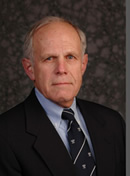
Keynote lecture-3
Comparative Physiology: Discovery in Support of Clinical Advancement (8:30 - 9:30; Room A)
Dr. Eugene Steffey
Professor Emeritus, Department of Surgical & Radiological Sciences, School of Veterinary Medicine, University of California, Davis, U.S.A.
Eugene P. Steffey, VMD, PhD is Emeritus Professor of the Department of Surgical & Radiological Sciences (veterinary anesthesiology), School of Veterinary Medicine, University of California, Davis (UCD), California, U.S.A. where, as a member of that faculty for 34 years, he was active in teaching and research, and delivering health care to animals. Since retiring from this UCD faculty post in 2007, he remains active in veterinary anesthesia-focused research and teaching as an Affiliate Pharmacologist, K.L. Maddy Equine Analytical Chemistry Laboratory at UCD, and as an Affiliate Faculty member, Department of Clinical Sciences, College of Veterinary Medicine and Biomedical Sciences, Colorado State University. Dr. Steffey is a Diplomate of both the American College of Veterinary Anesthesia and Analgesia (Charter Diplomate), and the European College of Veterinary Anaesthesia and Analgesia (Founding Diplomate).
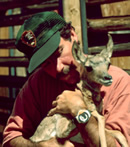
Lecture-12
Comparative Respiratory Physiology - Gas Exchangers and Metabolic Demand for Oxygen (9:50 – 10:50; Room A)
Dr. James H Jones
Professor, Department of Surgical and Radiological Sciences, University of California, Davis, U.S.A.
James H. Jones, PhD, DVM, is professor of comparative physiology in the Department of Surgical & Radiological Sciences in the School of Veterinary Medicine, University of California, Davis. His undergraduate studies were at the U.S. Naval Academy and the University of Arizona, and he received a MS degree from the University of Arizona in wildlife ecology. He completed a PhD at Duke University and then a DVM at Colorado State University. He taught organismic biology at Harvard University before moving to UC Davis in 1986. His research interests include comparative cardiorespiratory and exercise physiology, environmental physiology, thermoregulation and allometry, the influence of body size on structure and function in animals.
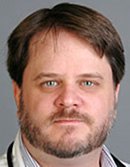
Lecture-13
Lung pathophysiology in the perioperative patient (10:50 – 11:50; Room A)
Dr. Matthew Mellema
Associate Professor, Department of Surgical and Radiological Sciences, University of California, Davis, U.S.A.
Dr. Matt Mellema is a native of Northern California and did his undergraduate training at UC Berkeley. He received his DVM degree from UC Davis in 1994. Following graduation, Dr. Mellema completed a focused internship in Small Animal Emergency Medicine at Tufts University, and then remained at Tufts as an instructor. Dr. Mellema completed a residency in emergency and critical care medicine at UC Davis in 2000. Following his residency, he obtained a PhD in Respiratory Physiology at Harvard University. Dr. Mellema joined the faculty at UC Davis in 2007, and is currently an associate professor of Small Animal Emergency and Critical Care.
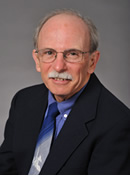
Lecture-14
Avian physiology: Implications for anesthesia (9:50 – 10:50; Room D)
Dr. John W. Ludders
Professor of Anesthesiology, emeritus, Department of Clinical Sciences, College of Veterinary Medicine, Cornell University, U.S.A.
John Ludders, DVM, DACVAA, is professor emeritus at Cornell University. He graduated from the College of Veterinary Medicine at Washington State University in 1977 and completed residency training in veterinary anesthesia and critical care at the University of California-Davis in 1982 and passed the certifying examinations of the American College of Veterinary Anesthesia and Analgesia. From 1982 to 1989 he was on faculty at the University of Wisconsin's School of Veterinary Medicine where he taught anesthesia to veterinary students, trained anesthesia residents and provided clinical anesthesia service to the large animal and small animal clinics; his research focused primarily on questions concerning avian anesthesia, especially cranes. In mid 1989 he joined the faculty in the Department of Clinical Sciences, College of Veterinary Medicine at Cornell University in Ithaca, New York where he taught anesthesia to veterinary students, trained anesthesia residents, provided clinical service in both the small and large animal clinics; his research continued to focus on birds, but also expanded into other anesthesia-related areas of interest.

Lecture-15
Applying pathophysiologic and pharmacological principles to anesthesia management of ruminants and camelids (10:50 – 11:50; Room D)
Dr. Khursheed Mama
Professor, Department of Clinical Sciences, College of Veterinary Medicine and Biomedical Sciences, Colorado State University, U.S.A.
KHURSHEED MAMA, DVM, DACVAA, is professor of anesthesiology at Colorado State University. She is currently also serving as President of the ACVAA. Dr. Mama completed an internship in large animal medicine and surgery at University of Guelph, Ontario, and a residency in anesthesiology and critical patient care at University of California, Davis. She earned her DVM from Washington State University. Her broad interest is in improving anesthetic safety and providing appropriate treatment of perioperative pain in veterinary patients. Her clinical teaching, research efforts, and CE seminars/laboratories are designed with these goals in mind.
4th September 2015: Perioperative patient management day

Keynote lecture-4
Perioperative analgesia (8:30 – 9:30; Room A)
Dr. Peter J Pascoe
Professor, Department of Surgical and Radiological Sciences, University of California, Davis, U.S.A.
Peter Pascoe, BVSc, DVA, DACVAA, DECVAA, is a professor in the Department of Surgical and Radiological Sciences at the University of California, Davis. He graduated from the University of Liverpool and went into general practice for 3 years before getting an internship in large animal surgery at the Ontario Veterinary College, in Guelph, Canada.He followed this with a residency in anesthesia and became a faculty member at this institution.He moved to California in 1989 and has been an anesthesiologist working with small animals and exotic species since then. He has had a long-term interest in opioids and pain management in animals and has recently been doing research in aspects of avian anesthesia. He enjoys skiing, among other things.

Lecture-16
Errors in veterinary anaesthesia (9:50 – 10:50; Room A)
Dr. John W. Ludders
Professor of Anesthesiology, emeritus, Department of Clinical Sciences, College of Veterinary Medicine, Cornell University, U.S.A.
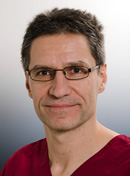
Lecture-17
Recent advances in monitoring and treatment of the respiratory system in anaesthetized animals (10:50 – 11:50; Room A)
Dr. Tamas Ambrisko
Department for Companion Animals and Horses, University of Veterinary Medicine in Vienna,
Tamas Ambrisko, DVM, PhD, DACVA, DECVAA is an anaesthesiologist at the University of Veterinary Medicine Vienna in Austria. He graduated from the University of Veterinary Medicine Budapest in Hungary and obtained a DVM degree. He completed his PhD in veterinary anaesthesiology at the Tottori University in Japan. He continued his career in the USA and pursued a residency in anaesthesiology at the University of Pennsylvania. He worked at the Massey University in New Zealand and then he moved to Vienna. He spends most of his time in research but also actively engaged in clinical service. He loves teaching anaesthesiology and in his free time he is raising four children.
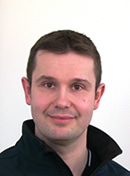
Lecture-18
Monitoring the circulatory system: Central versus peripheral perfusion (11:50 – 12:50; Room A)
Dr. Klaus Hopster,
Equine Clinic, University of Veterinary Medicine Hannover, Germany.
Klaus graduated as a Veterinarian in 2006 and completed his Doctoral Thesis about “ventilation with PEEP and alveolar recruitment during inhalation anaesthesia in horses and its influence on the early recovery period” in 2007. From 2007 until 2011 he performed a standard residency of the European College of Veterinary Anaesthesia and Analgesia (ECVAA) at the University of Veterinary Medicine in Hannover, Germany and became a Diplomate ECVAA in 2012. He is currently working as a Senior Lecturer in Anaesthesia and his research focuses on the peripheral perfusion and oxygenation during anaesthesia in horses.

Lecture-19
Post-anesthesia blindness in cats. (9:50 – 10:50; Room D)
Dr. Manuel Martin- Flores
Assistant Professor, Section of Anesthesiology, Department of Clinical Sciences, College of Veterinary Medicine, Cornell University, U.S.A.

Lecture-20
Sepsis management: priorities in the perioperative patient (10:50 – 11:50; Room D)
Lecture-21
AKI management priorities in the perioperative patient (11:50 – 12:50; Room D)
Dr. Matthew Mellema
Associate Professor, Department of Surgical and Radiological Sciences, University of California, Davis, U.S.A.







